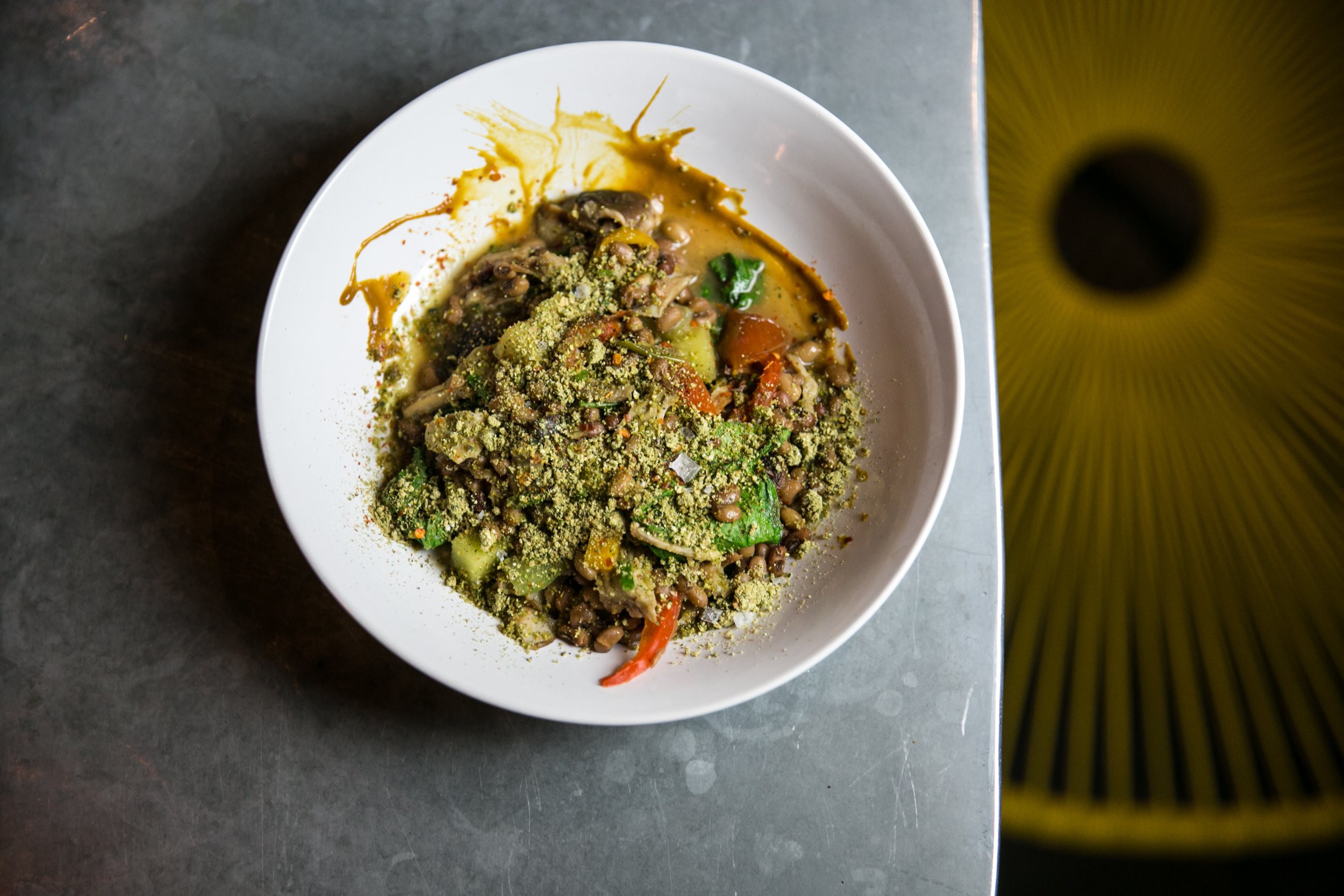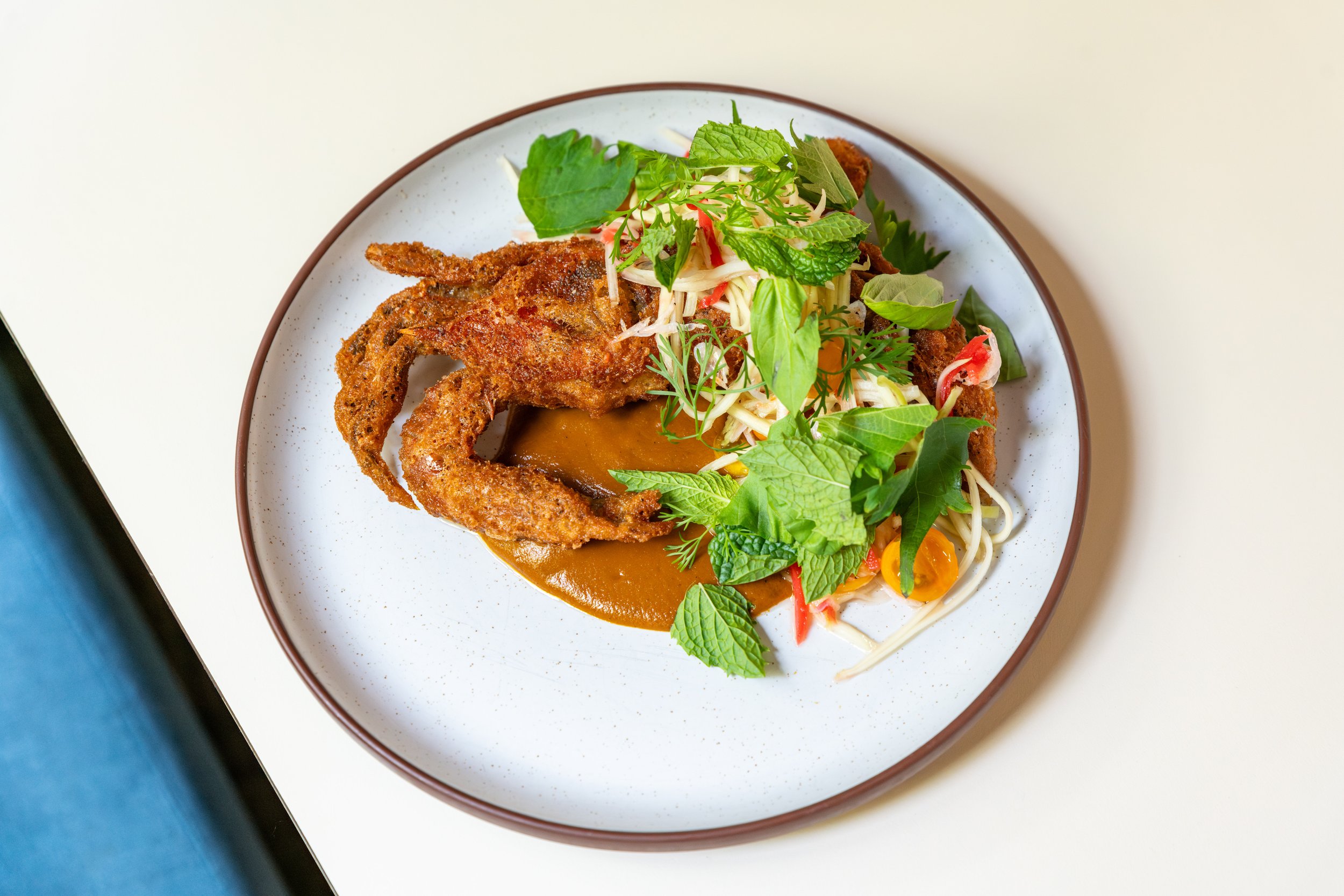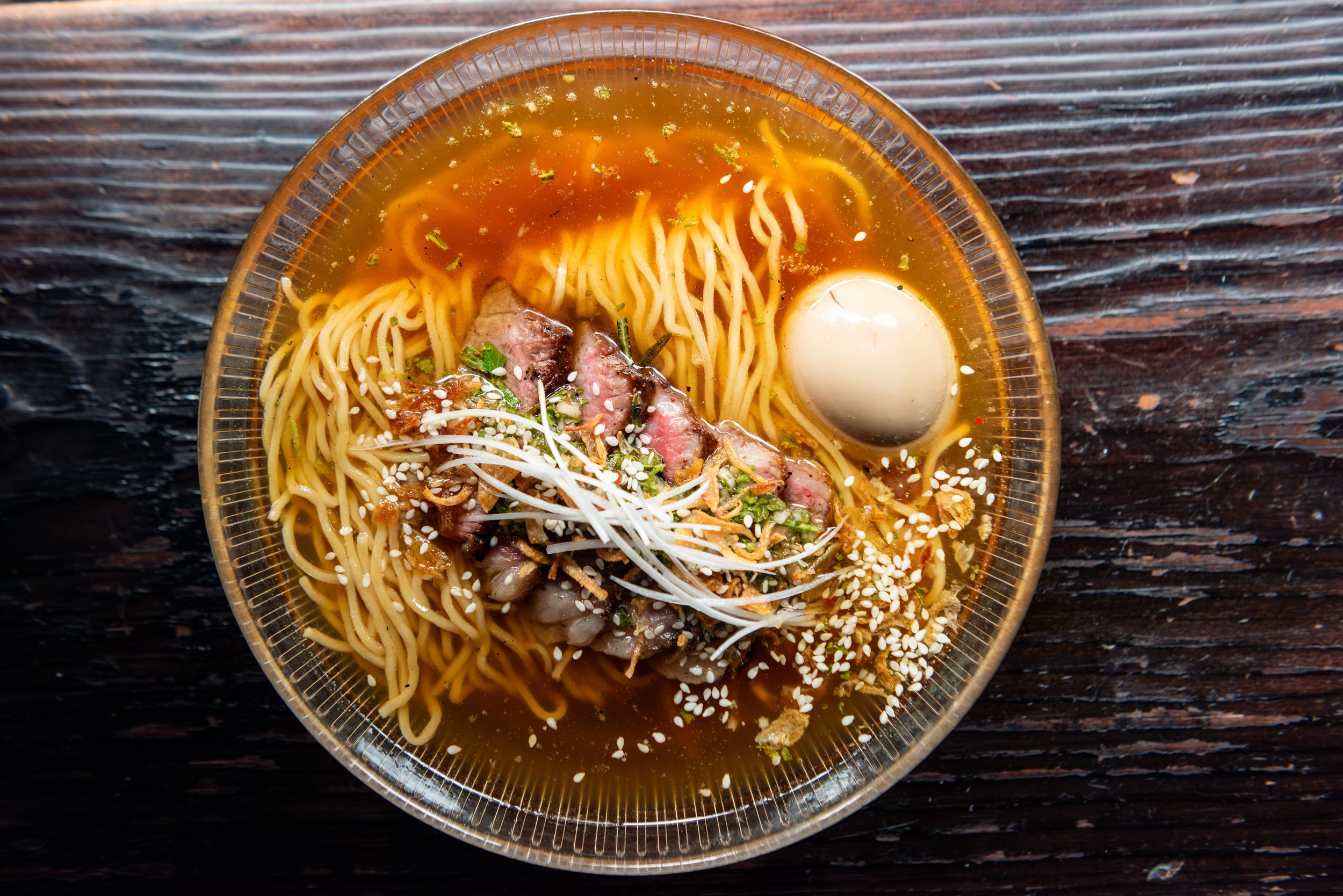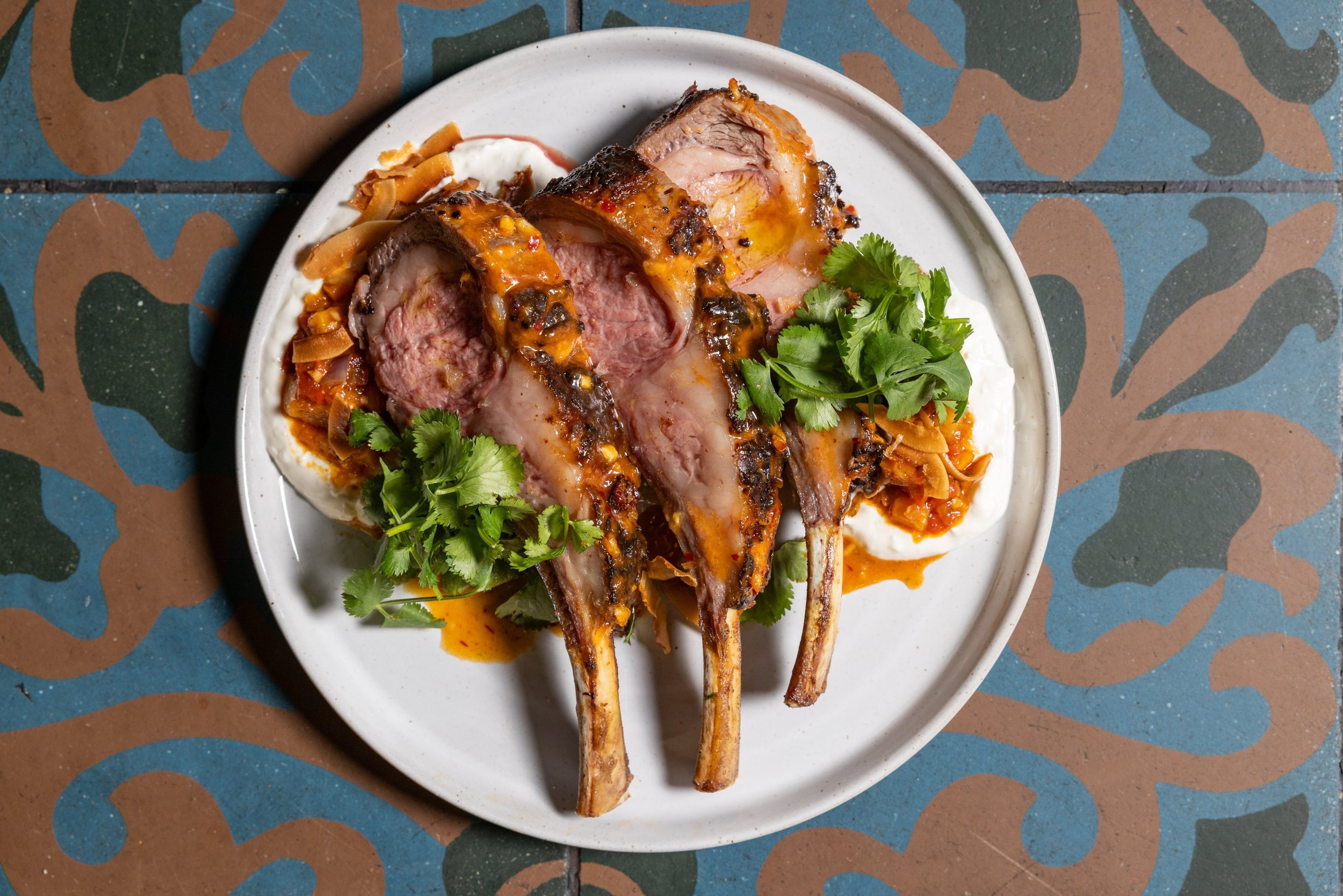The New MSG: Melon Skin Garnish
Using melon seeds and skin, Chef Jarrett Stieber of Eat Me Speak Me in Atlanta smashes perceptions on kitchen waste.
Sea Island Red Peas, Pork Jowl, Melon, Shiitakes, Bell Pepper, Bok Choi. Watermelon Seed Paste, and “MSG”
When it comes to reducing waste in the kitchen, there’s not much that can be done about melon scraps—or so we thought. Sure, you can pickle the rind or maybe make horchata from a stash of seeds. But those elements can only get you so far.
At Eat Me, Speak Me in Atlanta, Jarrett Stieber is doing melon one better. “We wanted to find a way to utilize the usual waste components of the melon: the skin and seeds,” says Stieber. Instead of the compost bin, his cantaloupe skins head straight for the dehydrator. Once dried, he grinds the skins into a powder and tosses that powder with salt, sugar, and dehydrated onion skin and garlic skin powder. It’s a seasoning mix his kitchen cheekily refers to as MSG (aka Melon Skin Garnish).
He makes good use of those seeds, too: boiling them with sorghum, roasted garlic, and vinegar until the seeds begin to split apart and soften. “Be prepared to refill that pot a bunch, and cook it on low for many, many hours,” says Stieber. You’ll know the seeds are done when they become chewy instead of fibrous and grassy. From there, he blends them with lime juice and oil until they become a flavorful, thick, emulsified sauce, which he uses as the base of a plate of Sea Island peas and pork jowl that’s been braised in pork stock and whey (a byproduct of their house yogurt and crème fraîche). The melon flesh—cold pickled in a 16:1:1 brine of water, white sugar, and salt—gets tossed in, too, along with roasted shiitakes and sweet chiles. The MSG gets dusted (heavily) over the top, and a few herbs finish the plate.
Together, he says that his MSG and seed paste gives the dish a nutty depth, “chocolatey, like mole with a funky citrus undertone.” The combination has made its way into a few other dishes, including a fried eggplant and raw beef dish which is among Stieber’s favorite uses.
He has done the same treatment to watermelon, honeydew, canary, and some Korean melon varieties, as well as butternut and a few other types of squash, though he admits melon’s sweet funk yields better results than the gourds. Either way, it’s a progressive use of scraps that adds depth to Steiber’s modern take on Southern cuisine.







